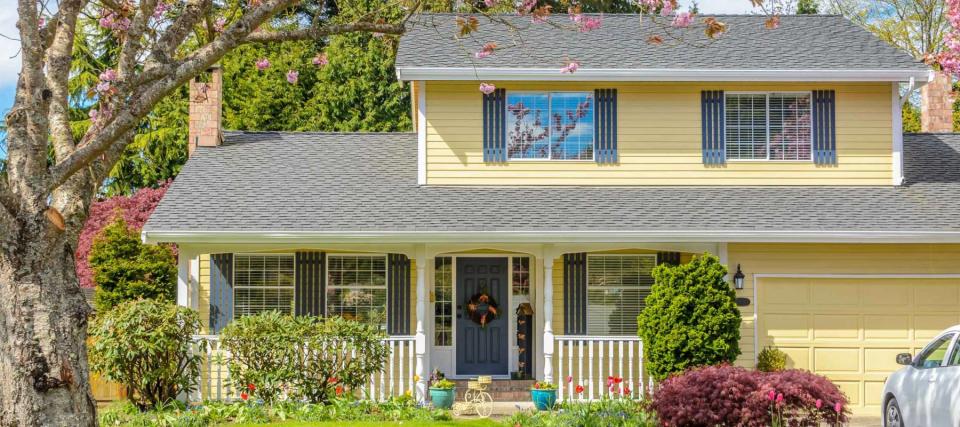How to score the lowest 15-year mortgage rate to refinance your home

Before the pandemic hit, the traditionally steep monthly payments of 15-year mortgages were way too expensive for many Americans refinancing their existing home loans.
America's most popular mortgage — the 30-year fixed-rate home mortgage — has typically been far more affordable than the 15-year option.
But as rates plunged to all-time lows last year, even 15-year loans started looking cheap. And more borrowers turned to them: In December, 15-year mortgages accounted for 13.8% of all home loan originations, up from 10.7% a year earlier, according to the Urban Institute.
Mortgage rates surged earlier this year but have cooled off in recent weeks, giving homeowners a fresh opportunity to get cheap 15-year refinance loans. Here's how to evaluate if the shorter-term mortgage is right for your — and how to get the lowest 15-year rate.
Today's 15-year mortgages can mean thousands in savings

Rates on 30-year fixed-rate mortgages have dipped back below 3% for the first time in weeks as investors have had new doubts about ending the pandemic and getting the economy back on track.
Last week, 30-year rates were averaging 2.97% — the lowest since late February — according to mortgage giant Freddie Mac. But rates on 15-year fixed-rate loans were even lower, averaging just 2.29%.
Let's be clear: Even with rates that are now more than half a percentage point lower than for 30-year fixed-rate mortgages, 15-year loans will give you a much higher monthly payment.
But today's 15-year rates are still among the lowest in history (the record low earlier this year was an average 2.16%), so the payments also among the cheapest ever.
Here's an example of how you can save with a 15-year mortgage right now: In March 2019, when the average for a 15-year fixed-rate mortgage was 3.76%, a $250,000 loan would have cost you $1,819 per month, or $21,828 a year.
But at the current average rate of 2.29%, that same loan will cost you $1,642 per month, or $19,704 a year — for annual savings of more than $2,100.
15-year mortgage vs. 30-year loan
Even better, the shorter-term mortgage will cost you tens of thousands of dollars less in total interest versus a 30-year loan.
If you were to refinance a $200,000 balance at the current average rates, your monthly payment would be $1,314 with a 15-year loan, but only $840 with a 30-year mortgage — nearly a $500 difference.
That might be a deal breaker for some, but when you consider the lifetime interest you’d save with the shorter loan term, thr high monthly payment might not seem so bad.
The total interest you’d pay by refinancing into a 15-year mortgage at 2.29% would be more than $36,500, while you’d have to fork over roughly $102,500 in interest for the 30-year loan at 2.97%. That’s an extra $66,000.
Don’t forget that in addition to saving more than $66,000, you’d pay off your debt in half the time.
Why shorter mortgage terms have better rates

The average interest rate on a 15-year fixed-rate mortgage is usually lower than the average on a 30-year loan because shorter-term loans are generally seen as less risky by lenders.
However, since a 15-year mortgage requires a higher monthly payment, the criteria needed to qualify for one is often stricter than for a 30-year loan.
You might ultimately decide the bar is too high and that you'll have to look for other ways to cut your housing costs — maybe by shopping around to find a lower rate on your homeowners insurance.
To land a 15-year mortgage, it may be necessary to raise your income above what you currently earn, reduce your debt-to-income ratio, or pump up your credit score by 20 points or more.
How to find the best 15-year mortgage rate

To ensure you’ll get the best rate possible on a 15-year refi, you’ll want to check your credit score before you start looking for offers.
You’ll need a score in the "very good" (740 to 799) or "excellent" (800+) range if you want lenders to feel confident about working with you.
If you haven’t been keeping tabs on your score lately, that's OK — you can easily check your score for free online, and get tips on how to boost it if it’s low.
Once your credit score is in good shape, you’ll want to shop around and compare quotes from at least three to five lenders to find the best 15-year loan offer.
Research from Freddie Mac has found that comparing five rates can save a borrower thousands of dollars over the life of a loan — so don't jump at the first offer you get.

 Yahoo Finance
Yahoo Finance 